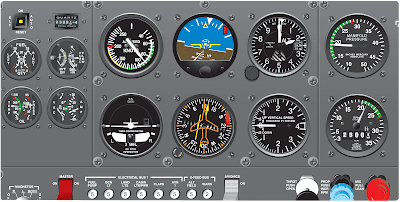Avionics equipment has become very reliable, and the likelihood of a complete communications failure is remote. However, each IFR flight should be planned and executed in anticipation of a two-way radio failure. At any given point during a flight, the pilot must know exactly what route to fly, what altitude to fly, and when to continue beyond a clearance limit. Title 14 of the Code of Federal Regulations (14 CFR) part 91 describes the procedures to be followed in case of a two-way radio communications failure. If operating in VFR conditions at the time of the failure, the pilot should continue the flight under VFR and land as soon as practicable. If the failure occurs in IFR conditions, or if VFR conditions cannot be maintained, the pilot must continue the flight:
- Along the route assigned in the last ATC clearance received;
- If being radar vectored, by the direct route from the point of radio failure to the fix, route, or airway specified in the vector clearance;
- In the absence of an assigned route, by the route that ATC has advised may be expected in a further clearance; or
- In the absence of an assigned route or a route that ATC has advised may be expected in a further clearance, by the route filed in the flight plan.
The pilot should maintain the highest of the following altitudes or flight levels for the route segment being flown:
- The altitude or flight level assigned in the last ATC clearance received;
- The minimum altitude (converted, if appropriate, to minimum flight level as prescribed in 14 CFR, part 91 for IFR operations); or
- The altitude or flight level ATC has advised may be expected in a further clearance.
- When the clearance limit is a fix from which an approach begins, commence descent or descent and approach as close as possible to the expectfurther- clearance time if one has been received. If an expect-further-clearance time has not been received, commence descent or descent and approach as close as possible to the estimated time of arrival as calculated from the filed or amended (with ATC) estimated time en route.
- If the clearance limit is not a fix from which an approach begins, leave the clearance limit at the expect-further-clearance time if one has been received. If no expect-further-clearance time has been received, leave the clearance limit upon arrival over it, and proceed to a fix from which an approach begins and commence descent or descent and approach as close as possible to the estimated time of arrival as calculated from the filed or amended (with ATC) estimated time en route. [Figure]
While following these procedures, set the transponder to code 7600, and use all means possible to reestablish two-way radio communication with ATC. This includes monitoring navigational aids (NAVAIDs), attempting radio contact with other aircraft, and attempting contact with a nearby flight service station (FSS).

